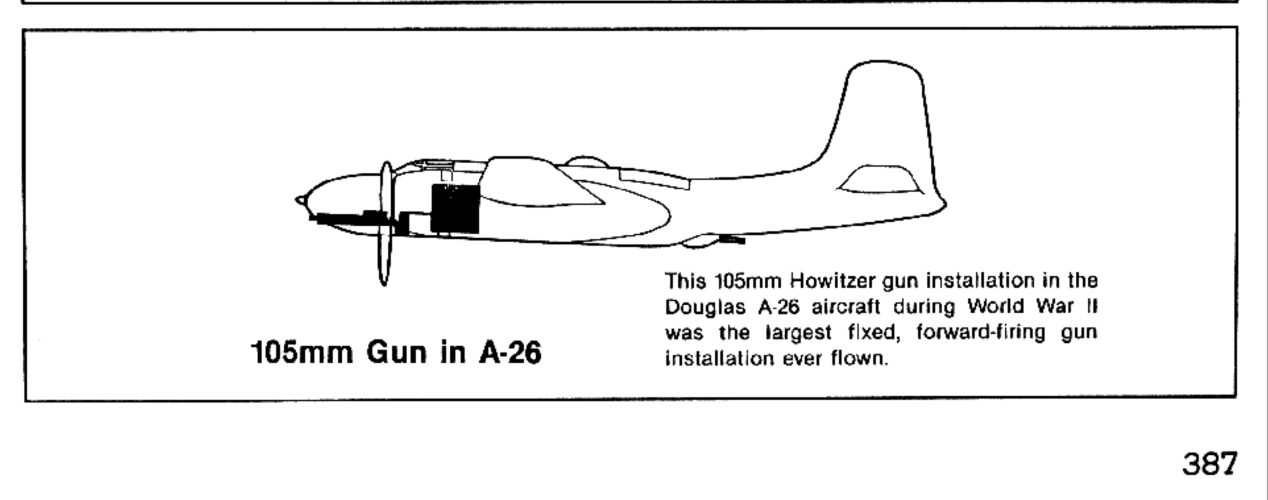Largest of all the RCLs considered for firing from aircraft was a German weapon, the Rheinmetall G104, a 36,5 cm calibre gun designed to fire a 635 kg shell at 315 m/sec, the recoil being balanced by the expulsion of the equally heavy cartridge case to the rear. The intention was to hang the four tonne gun under a bomber and fire it in a steep dive, battleships probably being the main intended target. However, ground firing tests demonstrated that the muzzle and venturi blasts would be so severe that the aircraft would be unable to survive them, so the idea was abandoned.
Slightly more practical German schemes included the 8,8 cm Düsen-Kanone (Düka) 88, which fired a conventional 88 mm shell at 500 m/sec, the recoilless effect being achieved by a high-speed jet. Weight was around 750 kg. The Düka was a repeater, having an eight-round magazine. Although it was test-fired successfully on the ground, the same problems of blast damage to the aircraft occurred and it was decided that it was easier to utilise conventional weapons and control their recoil by means of muzzle brakes and absorbent mountings, so the Düka was abandoned. The same fate befell the 5,5 cm MK 115, essentially a scaled-down Düka, which was designed to fire belt-fed, combustible-case cartridges at 300 rpm and 600 m/s. It was hoped that it would weigh as little as 100 kg, but in fact turned out at 280 kg. At this weight, it offered no advantages, and some disadvantages, compared with the conventional MK 112.


